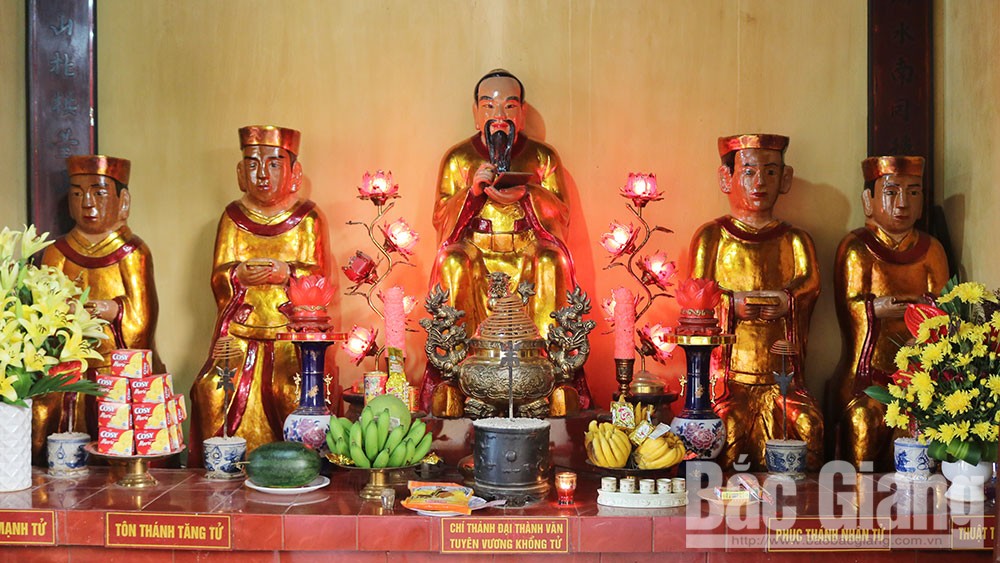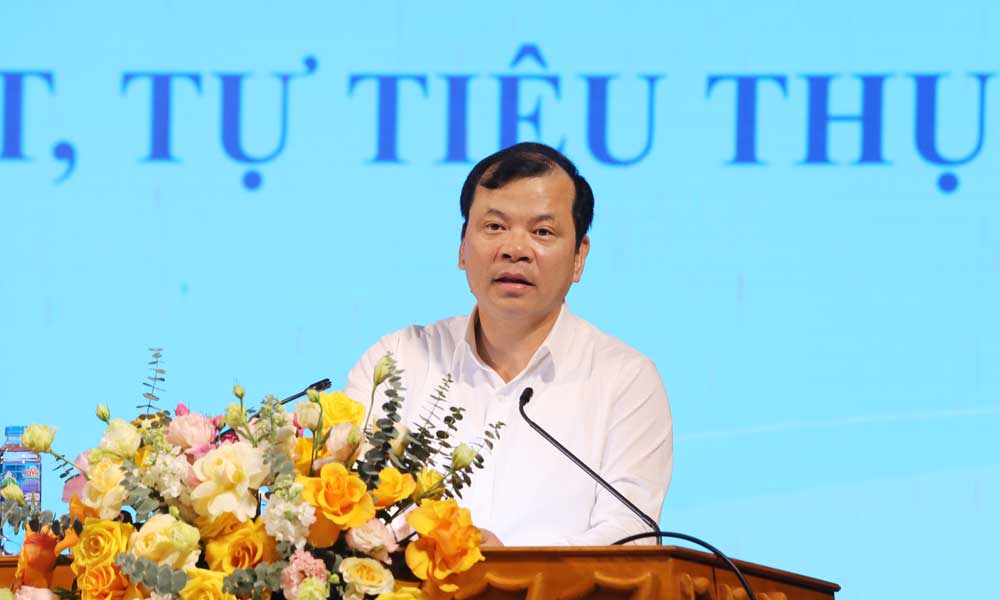Dinh Uyen Temple of Literature– Symbol of fondness for learning
Related news  |
It is the place where the major events of the village took place, such as taking students to the capital city to attend Confucian examinations and welcoming new laureates to the village to report their achievements to the ancestors. Therefore, the temple was also a place where the spirit of learning was shining.
 |
|
Altar dedicated to Confucius and his four disciples at the Dinh Uyen Temple of Literature. |
The Dinh Uyen Temple of Literature is also called "Den
Legend has it that the Dinh Uyen Temple of Literature was built long ago when the whole An Binh region today was just a wild reed area. One day, an old woman from the other side of the Thuong River went to Ke Market in the early morning.
When she just got off the boat, she heard someone reading books in the reeds. She looked for the reader but did not see anyone, except five stones. She sat next to a brush of reeds and again heard
At that market, she bought five hats covering the five stones. After that, she gave birth to five sons who all passed Confucian examinations and served as mandarins. According to the legend, the five people were worshiped in five villages of formerly Dinh Uyen commune.
There are now still worshipping steles for them: laureate Moc Hoan in Truoc village, laureate Hoang Luu in Ngo village, laureate Luong Thanh in Luong village, laureate Thai Giam in Xuan village, and laureate Giam Do in Do village.
Later, the villagers set up a temple called "Den
In 1991-1992, the people discovered three statues and carved two others, and restored the temple on the old land. Inside the temple, there is an altar where the statues of the philosophers are placed. In the middle is the statue of Confucius and the two sides are those of his four disciples namely Yanzi, Zengzi, Mencius
A horizontal lacquered board engraved with four Chinese characters which mean “Dinh ap van
In the period before the August Revolution in 1945, old people in Dinh Uyen still performed worshipping rituals here but then the worship was stagnated. After peace was restored, with the birth of An Binh village, the local people restored the traditional worshipping rituals and opened a festival on the 2nd of the third lunar month every year.
During set occasions during the year, the people in the region and visitors from other localities who come to pray for their children to study well and pass examinations were very crowded. Particularly, the
It is the tradition of studiousness that has created glory for the land and the people of Dinh Ke. Through the examination road, the locality provided the country with well-known diplomats, economists, politicians, military strategists
Typical among those was Dr. Nguyen Duy Nang (from Xuan village). He was a doctoral laureate in the year of Giap Tuat (Dog), the ninth Sung Khang year (1574) of Mac Mau Hop, becoming a mandarin and a general of the Le dynasty.
The sages worshiped at the temple are the pride of the local people throughout the ages, thus creating the values of the people of formerly Dinh Uyen and now Tan Tien. In the time of urbanization, the values of village culture are easily lost if they are not protected.
Being aware of this, Tan Tien people today are always united to build the homeland, but
Thu Huong
 Bắc giang
Bắc giang














Reader's comments (0)